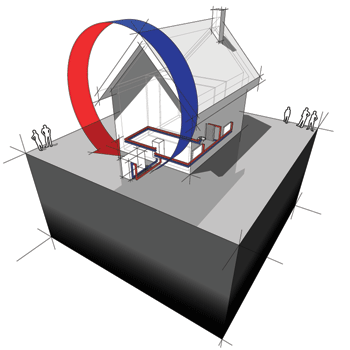Energy Efficient Home & HVAC Tax Credits - Tulsa Oklahoma
Installing energy-efficient HVAC equipment is a great way to reduce your carbon footprint while saving money and energy. However, this equipment is also often expensive. You can save money, but only if you can afford the system in the first place. Fortunately, there are a number of tax incentives that can help offset those costs. Here's a breakdown of different HVAC tax credits and what they entail.
Federal Energy Tax Credits - 2023
The previous Nonbusiness Energy Property credit (25C) for installing high-efficiency equipment was extended through 2022 and provides federal tax credits of up to $500.
The amended Energy Efficient Home Improvement Credit (25C) begins in 2023 and extends through 2032. It increases the tax credit limits for high-efficiency equipment as follows:
Eligible equipment includes:
Heat pumps and heat pump water heaters
Energy-efficient HVAC systems (including furnaces, boilers, and central AC)
The 25C credit has an annual cap of $1,200 (except heat pump):
Up to $600 each for a qualified air conditioner or gas furnace, with an annual cap of $1,200
Up to $2,000 with a qualified heat pump, heat pump water heater, or boiler
There are no income requirements for this tax credit, and it cannot be combined with other federal programs.
Federal HVAC Tax Credit
The federal government has always made a point of encouraging energy efficiency for homeowners as well as business owners. Switching to high-efficiency HVAC equipment helps reduce pollution and fight global warming.
The most recent HVAC tax credit is called 25C. It covers high-efficiency heating and cooling systems, including A/Cs, furnaces, heat pumps, and mini splits. Originally enacted for equipment purchased in 2018 and 2019, the credit has been extended through 2021.
Therefore, if you're thinking about getting a high-efficiency system, now is the time. Any qualifying system purchased and installed before the end of this year can earn you a credit of 10% of the cost up to $500. There's also a $300 maximum credit available for certain ACs, heat pumps, and mini-splits, or a $150 credit for furnaces and boilers.
Renewable Energy Credits
There are also credits for homeowners who invest in renewable energy, including fuel cells, wind turbines, and geothermal heat pumps. If you installed a qualifying renewable energy system by the end of 2019, you can claim up to 30% of the cost. If you install one by the end of 2022, you can claim up to 26%, or 22% by the end of 2023.
There may also be certain state credits you can claim that are specific to Oklahoma. Whatever tax credits you qualify for, be sure you're taking full advantage of them. Talk to your tax adviser to see how you can benefit from these credits and what you need to do to claim them.
For help making upgrades that you can claim an HVAC tax credit for, contact us at Air Assurance. We help Broken Arrow homes save money and energy.



